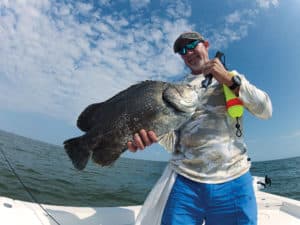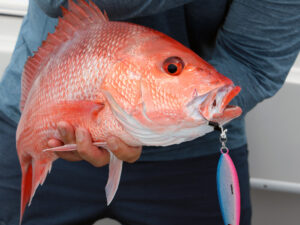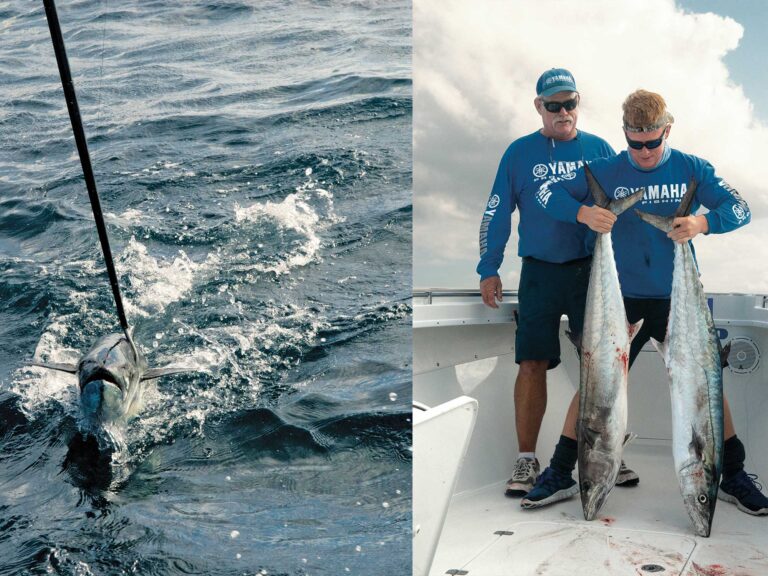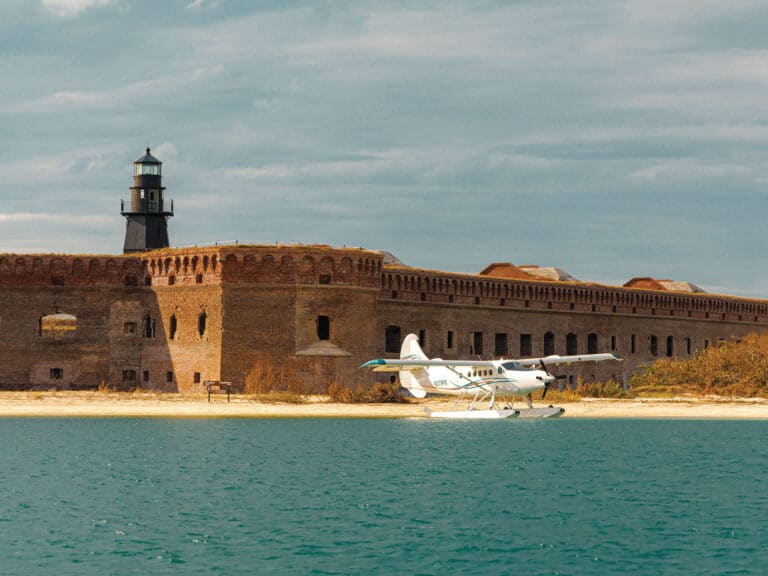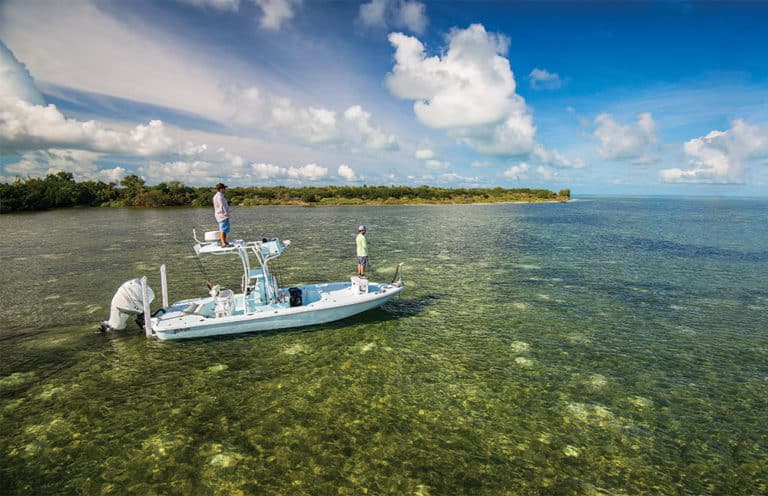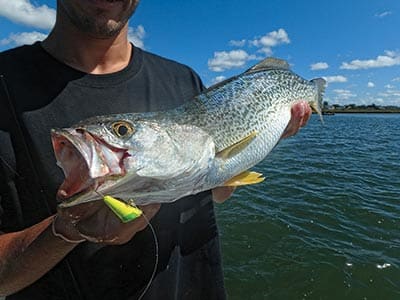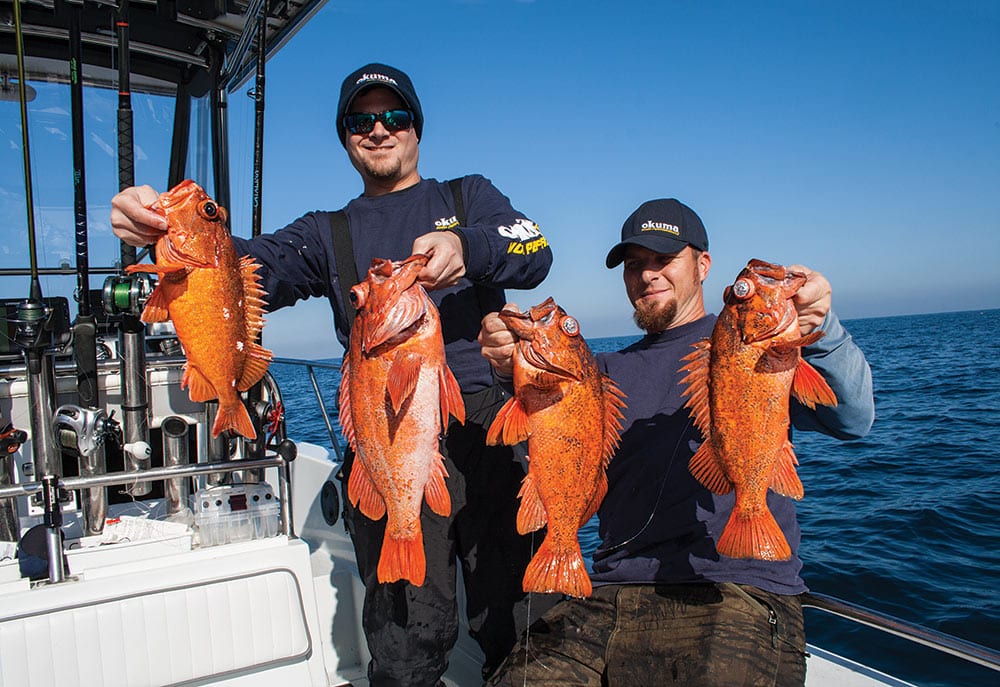
Cruising southward along Baja’s coastline, we found ourselves at one of Capt. Barry Brightenburg’s favorite spots. All three anglers on board dropped baits, then one, two, three, everyone hooked up the instant the baits reached bottom, and we all cranked up a 6-pound bocaccio, a 10-pound lingcod, and a 5-pound vermilion rockfish.
Fog draped the Pacific waters when we left San Diego, California, so Brightenburg cautiously piloted the boat toward Mexico border. In an hour, we were fishing in 300 feet of water off Bahia Descanso, 20 miles south of the border.
Our targets on this winter day were Pacific rockfish and lingcod. More than 80 species of rockfish inhabit North America’s Pacific waters: canary, copper, green-spotted, olive, rosy, starry, vermilion and yellowtail rockfish, to name a few. Throw in lingcod, California sheephead, ocean whitefish, and other bottom species, and you never know what you might hook.
Why Mexico?
California’s fishing regulations, close fishing for rockfish in January and February, and with rockfish closed in the Golden State during the winter for the past few years, and with Mexico allowing the year-round take of rockfish, lingcod, sheephead, whitefish, and other bottom species, heading south of the border has become an excellent alternative.
Finding Structure
The key to finding rockfish is locating structure, such as wrecks, in depths ranging from 90 over 350 feet.
The first few trips into Mexican waters you will need to spend some time looking for the right kind of bottom, or hire a guide to help show you the way. If you’re a newcomer to Mexico rockfishing, one way to locate likely fishing spots is by subscribing to fishdope.com, which offers a list of rockfish areas, in addition to fishing reports.
50-Fathom Freeway
As a starting point, search with your fish finder along the 50-fathom curve that stretches southward from the Coronados to a seamount known as the Finger Bank, then undulates around the bank and turns inshore off Bahia Descanso, follows the coast southward, around San Miguel Canyon, Isla de Todos los Santos, Banda Canyon and Cabo Punta Banda off Ensenada, 60 miles below the border.
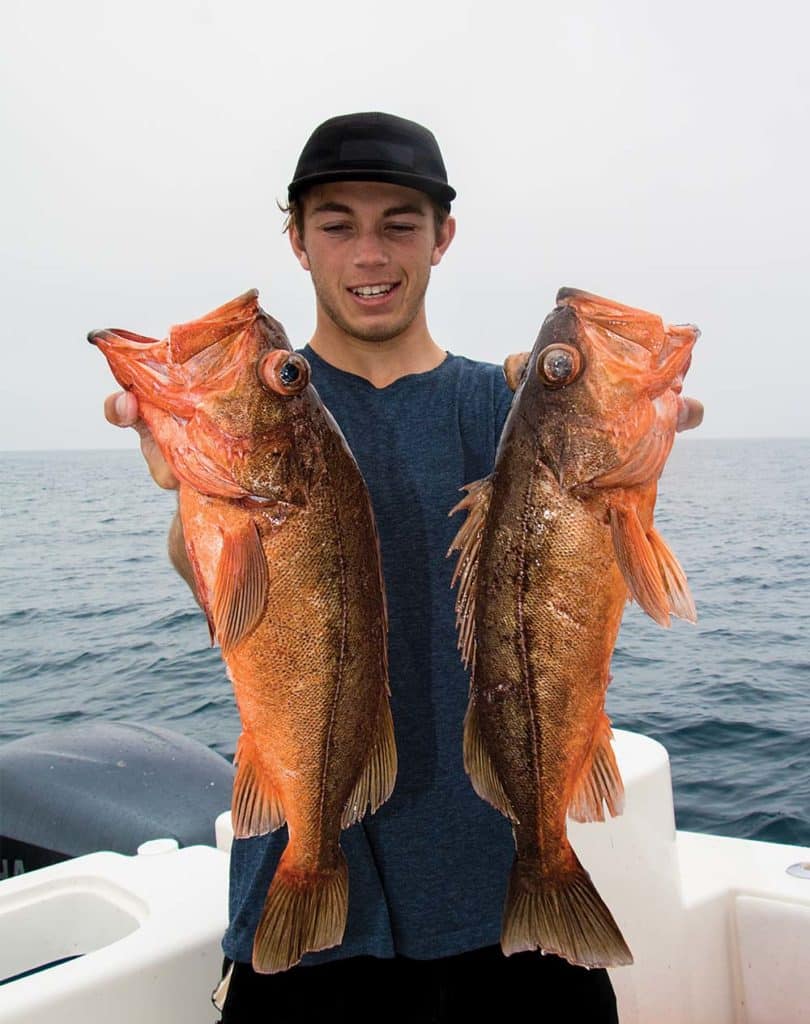
Mexican regulations permit rockfishing at any depth, though they prohibit electric reels, so it’s all human power on deep-drops.
“You might find suitable rockfish structure anywhere inside the 50-fathom curve,” Brightenburg says.
Lures and Baits
Live bait isn’t critical. Cut bait such as fresh sardine fillets or frozen squid strips work well, sometimes better than live bait. For lingcod, however, live bait such as Pacific mackerel, sand dab, sardines, or even small rockfish produce far better than strips.
Artificials also prove effective for lingcod. I’m partial to heavy metal lures such as a 4- to 8-ounce Promar Ahi Assault diamond jig fitted with a single Siwash 6/0 or 7/0 hook and bounced along the bottom. Large vermilion and copper rockfish also attack these jigs.
Favor 4- to 8-ounce lead-heads with a soft-plastic paddle tail such as the 9-inch Giant Shad from Optimum Baits to entice strikes from both lingcod and large rockfish when jigged or retrieved slowly along the bottom.
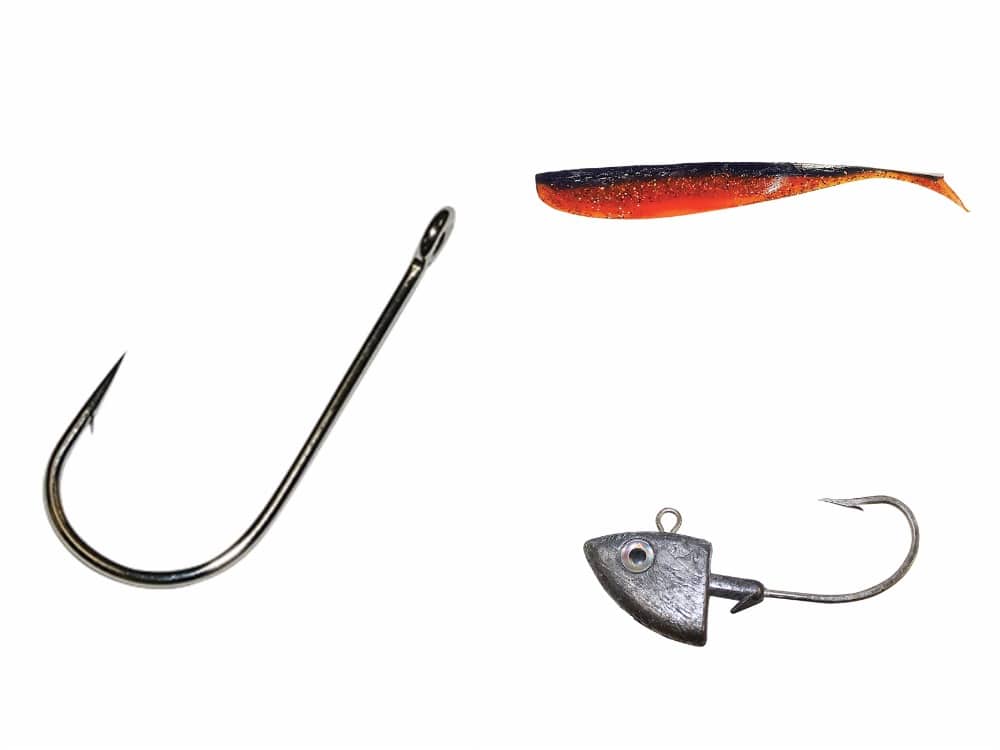
A stinger hook increases the hookups. When a fish bites, wind into the fish rather than swing the rod to set the hook. The latter just pulls the lure out of the fish’s mouth.
Fishing deep structure is easier and more effective in the absence of a fast drift, which makes it difficult to keep baits near the bottom. Experienced anglers often Time your Mexico trips to fish mornings, when winds tend to be lighter
Rockfish Tackle
For depths under 200 feet, a medium-action, 7- to 8-foot rod with a two-speed lever-drag reel works well. For greater depths, turn to a heavy-action rod with the same medium-size reel.
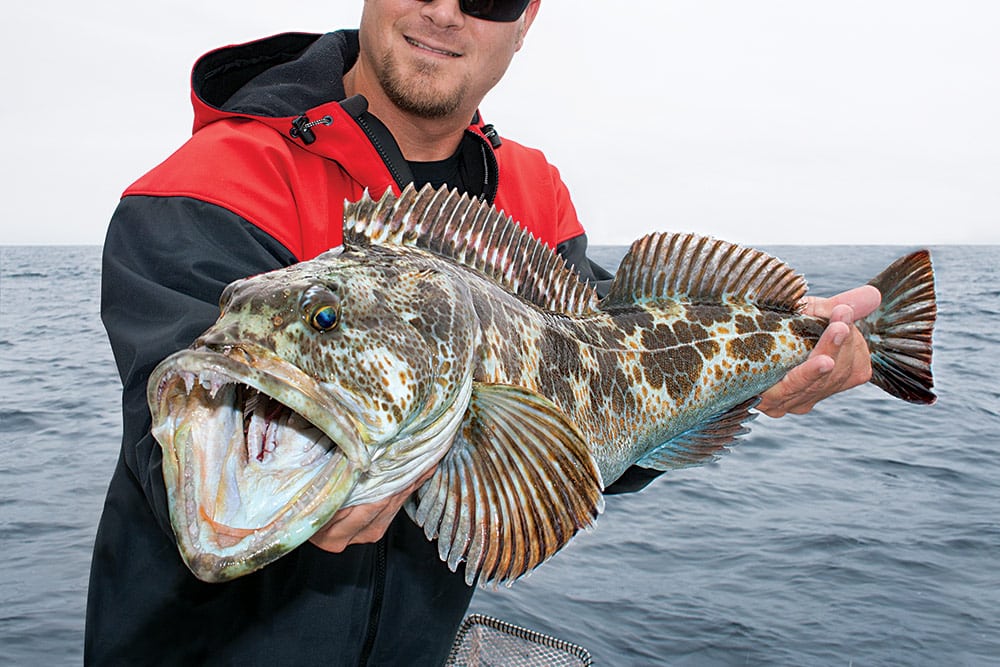
Two-speed reels might seem like overkill, but Mexico allows up to four hooks on a leader, and reeling up four rockfish plus a heavy sinker from 300 feet wears you out and the lower ratio eases the task.
Braided line in the 50- to 65-pound range is the most popular for rockfishing.
Terminal Gear
When fishing jigs for rockfish and lingcod, some anglers splice on a top shot of 30- or 40-pound-test monofilament using a double Uni-knot. Other anglers tie the lure directly to the braid using an improved clinch, San Diego jam, or Uni-knot.
Rigging a special leader known as gangion minimizes the twist on the line caused by the baits spinning.
Twist-Free Rockfish Gangion Rig
If you fish baits on as many as four hooks in a row, the maximum permitted in Mexico, a special leader known as a gangion helps minimize line twist during the drop and retrieve. Thread 60- to 80-pound leader material through the eye of a barrel swivel, place one or two beads on each side of the eye, and squeeze crimping sleeves on the leader to secure the beads and swivel. Place as many as four of these assemblies, 18 inches apart, on the leader. Tie a 4-inch-long leader with a hook to the free eye of each swivel. Use a snap or another swivel at the top of the gangion (about 12 inches above the top hook) to attach the main line, and another snap swivel at the bottom (12 inches below the bottom hook) to attach a sinker.
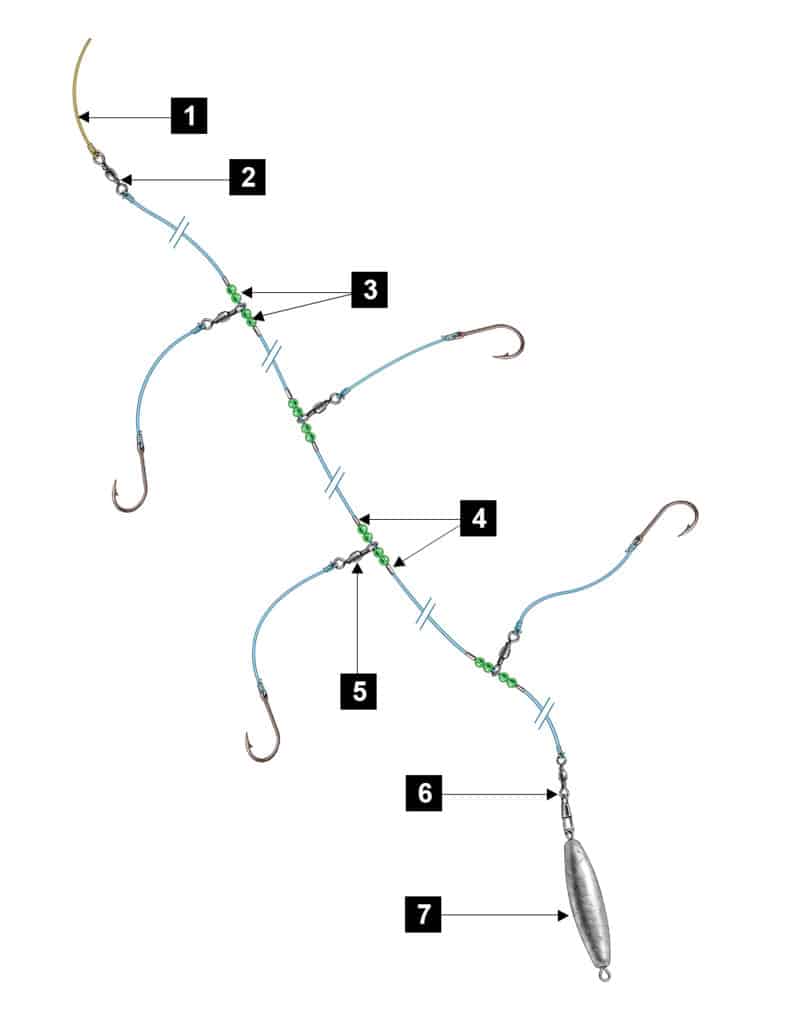
Rig Components
1.) Main Line
2.) Swivel
3.) Rigging Beads
4.) Crimping Sleeve
5.) Swivel and 4-Inch Leader
6.) Snap Swivel
7.) Torpedo Sinker
Many anglers simplify things by tying one or two 3-inch-long dropper loops (about 18 inches apart for multiple hooks) on the line (either braid or short mono top shot), then they secure a 3/0 hook to each loop and tie a torpedo sinker at the bottom.
When a fish bites, reel tight and swing hard to set. However, if you are fishing with multiple hooks, refrain from reeling up after hooking your first fish. Leave the rig down in hopes that more fish will load up on the gangion. If you’re lucky, you’ll bag four fish at once and be well on the way to your 10-fish Mexican limit for the day.
SWS Planner
What: Pacific rockfish, lingcod, and other bottom species
Where: From the Mexican border to Ensenada, in 90 to 350 feet
When: January and February (closed season for rockfish in Southern California)
Who: Anglers aboard reliable craft 20 feet and up. Many Southern California charter captains can show you where and how to catch rockfish off this stretch of
Mexico’s coast.
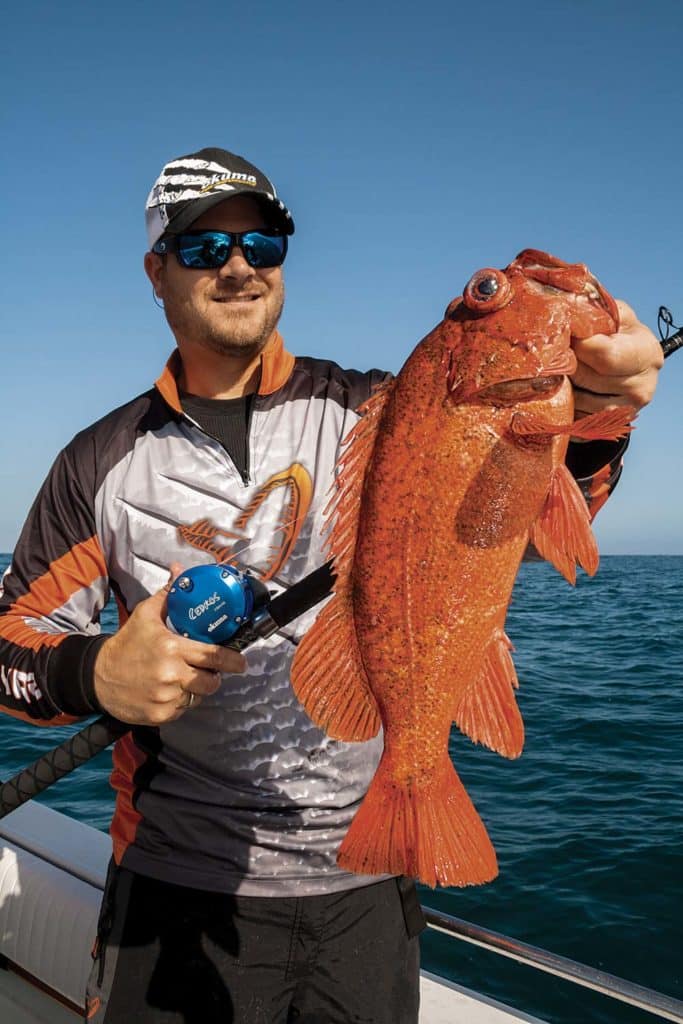
Mexico Rockfish Guides
• Capt. Barry Brightenburg, 619-540-8944, alwaysanadventurecharters.com
• Capt. Duane Mellor, 619-850-7575, pinnaclesportfishing.com
• Capt. Jaime Thinnes, Seasons Sportfishing, 714-206-6146, seasonssportfishing.com
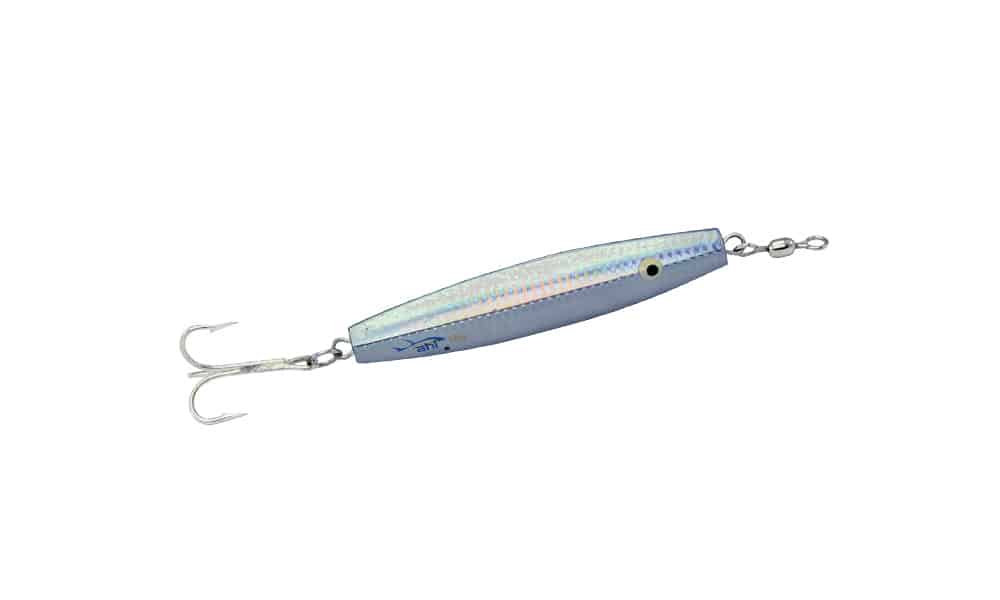
SWS Tackle Box
Rods: 7- to 8-foot medium-action for depths under 200 feet; 7-foot heavy-action for depths beyond 200 feet
Reels: Medium-size, two-speed lever drag
Line: 50- to 65-pound braid (10-foot top shot of 30- to 40-pound mono optional)
Terminal Rigs: For cut bait, two- to four-hook gangions with 3/0 hooks and torpedo sinkers ranging from 8 ounces to 2 pounds
Lures: 4- to 8-ounce diamond jigs or lead-heads with soft-plastic paddle tails
Mexico’s Fishing Regulations and Bag Limits
Mexico allows a daily bag of 10 fish per person, with no more than five of a single species, except for giant sea bass (which counts as five toward the limit of 10) and any billfish or shark (only one of each is allowed). For bluefin tuna, dorado and Gulf grouper, two of each is allowed per day, but those two count as five toward the 10-fish limit. For more, visit sportfishinginmexico.com/rules.
Mexico imposes no size limits, but once you come back across the border by water or land, California bag and size limits apply. So sheephead, often caught while targeting rockfish, must be 12 inches, lingcod must be at least 22 inches, and you’re only allowed two in California. You cannot possess any rockfish protected in California such as cowcod and yelloweye.
California DFW requires you to complete a Declaration/Importation of Fish and Wildlife when bringing fish from a foreign country. To access a form and learn more, visit wildlife.ca.gov/Enforcement/Entry-Declaration.



